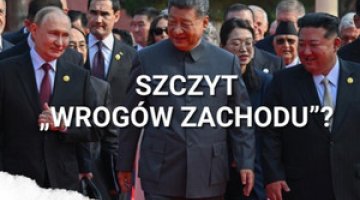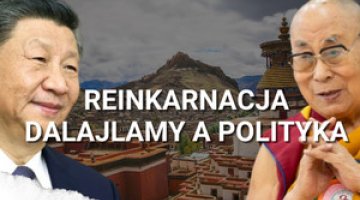China after its abrupt U-turn on the ‘zero COVID’ strategy
On 8 January, the quarantine requirement for people arriving in the People’s Republic of China (PRC), introduced in March 2020, was lifted. The decision is part of an abrupt U-turn on the ‘zero COVID’ strategy that began late last year. On 7 December, the National Health Commission (NHC) lifted restrictions on the movement of people within the country, and on 12 December, the mobile application system that determines the health status of residents was switched off. On 13 December Vice Premier Sun Chunlan, who is in charge of the response to pandemic on behalf of the Politburo of the 19th Central Committee of the Communist Party of China (CCP), declared that China was shifting from “preventing infections” to “treating those affected by coronavirus”. A day later, the NHC announced that it would no longer report the numbers of asymptomatic cases because there was “no way to track the actual numbers” of infections following the abolition of mandatory mass testing. On 25 December, the NHC said it would also no longer regularly publish data on confirmed infections. However, the NHC acknowledged at a press conference on 14 January that there had been a total of 59,938 deaths related to SARS-CoV-2 infection in health facilities between 8 December 2022 and 12 January this year, and that about 90.1 percent of those who had died were aged 65 or older.
The surge in infections and the Chinese government’s information policy on COVID-19 are causing major concern among international partners, who are now introducing measures such as mandatory testing for people flying from China to the US, Japan, South Korea and some EU countries. On 22 December last year, the World Health Organisation (WHO) acknowledged that it had not received any data from the PRC on new hospitalisations of COVID-19 patients since Beijing dropped its restrictions on movement within the country. The last WHO report containing data from the PRC was published on 4 December 2022. It reported 28,859 hospitalisations in China, the highest figure since the outbreak of the pandemic three years ago.
Commentary
- As a consequence of the decision to make an abrupt U-turn from its ‘zero COVID’ strategy, China is currently experiencing its largest ever wave of COVID-19 cases. Beijing’s opaque information policy is forcing observers to make estimates on the extent of the pandemic in the PRC on the basis of modelling and statistics on infections among people arriving from China to other countries. The UK-based healthcare predictive analytics company Airfinity estimates that China is averaging 3.73 million coronavirus infections and 21,300 coronavirus-related deaths per day. The total number of infections since 1 December 2022 has been put at 58.1 million, with 345,560 deaths (this estimate was last updated on 13 January). Airfinity assesses that COVID-19 infections hit their first peak in China on 13 January this year, with 3.7 million cases per day, and that after ten days the daily number of deaths will reach around 25,000, resulting in 584,000 deaths since the virus began to spread freely around the country in December 2022. The company forecasts a total of 1.7 million deaths across China by the end of April 2023. However, it appears that we should not expect Beijing to publish any convincing data verifying such simulations in the foreseeable future. Also, numerous social media reports of overcrowded hospitals, hastily organised temporary morgues or mass outdoor cremations suggest that the reality of the pandemic is on a completely different scale from the relevant official announcements.
- Beijing’s abrupt U-turn from its ‘zero COVID’ strategy was likely influenced by a number of factors. These include: the inability to contain the Omicron variant, which had been spreading rapidly and had often gone undetected in screening tests; the deteriorating economic situation related to the restrictions on public mobility; and the rising costs of continuous mass testing, which had depleted local government budgets. A deepening public fatigue with the drastic restrictions was also evident, as reflected in numerous protests against them. The demonstrations culminated in late November last year; they were mostly local, but in isolated cases turned into political demonstrations calling for Xi Jinping to step down. When taking the abrupt decision to lift the restrictions, the government in Beijing also decided to cease regular publication of data on SARS-CoV-2 infections. By doing so it wanted to avoid panic, but it is also seeking Chinese society’s quick recognition of COVID-19 as an illness akin to seasonal flu. It would also be politically inconvenient to publicly report the numbers of new cases; these are likely skyrocketing after three years of the repressive ‘zero COVID’ strategy, which according to the PRC’s propaganda narrative was pursued in the name of avoiding the waves of cases and deaths similar to those that supposedly swept through Western countries. That is why Beijing is also bringing down medical death statistics by drastically narrowing the criteria for declaring a patient’s death as having been caused by COVID-19.
- The sudden lifting of all the restrictions, on the threshold of the upper respiratory infection season rather than at its end, can be explained by the Chinese government’s desire to achieve herd immunity for the country’s population as soon as possible. The rulers are trying to shorten the duration of the health crisis as much as they can, and will be seeking to bring the economy back to a relatively normal state by the second quarter of the year at the latest. Given the general inefficiency of the Chinese health service, any steps to slow down further waves of the pandemic are unlikely to reduce the number of victims significantly. The attempts at spin being made by some regional authorities also suggest that this is Beijing’s line of reasoning. For example, the leadership of Henan province, the PRC’s most populous, reported in early January that around 88.5 million people in the province, or nearly 90 percent, had already contracted COVID-19 (without disclosing how this figure had been obtained). Such a rapid spread of coronavirus seems unlikely, both in the light of known scientific models and the experiences of other countries, but it allows local officials to ‘report’ to party headquarters on their ‘success’ in achieving herd immunity. It also demonstrates that the party-state apparatus is treating the ‘zero COVID’ strategy as a political campaign. Fears are thus rising that the CCP’s leadership will carry out a purge in regional structures. On the one hand, this will speed up recentralisation, which is one of the objectives of General Secretary Xi Jinping’s rule, while on the other it will allow Beijing to shift political responsibility for the ‘errors and distortions’ of the ‘zero COVID’ strategy onto local authorities.
- The lack of reliable data on pandemic-related developments and the evolution of the coronavirus in China is leading many countries around the world to impose restrictions on arrivals from the PRC, just as Beijing has also dropped mandatory testing for those leaving the country. They are required to take a test before leaving China or at the border; in some countries, people who test positive must now undergo home quarantine in accordance with local regulations. The threat of the spread of a new sub-variant of SARS-CoV-2, XBB.1.5 (dubbed ‘the Kraken’ by some media) is a major concern. The restrictions imposed by other countries are prompting formal objections from Beijing and accusations of discrimination against the Chinese, even though the PRC itself maintained one of the world’s strictest border regimes for nearly three years of the pandemic. Beijing has also suspended the issuing of short-term visas to South Korean and Japanese citizens in retaliation for restrictions imposed by their countries on travellers from China. These actions appear to be designed to distract the Chinese public from the pandemic situation in the country, and to mobilise the public against a nationalist backdrop. However, any further escalation of tensions will adversely affect Beijing’s efforts to stabilise diplomatic relations with Western countries (see ‘A tactical pause in relations with the West: China plays on hopes for peace’)
- On the economic front, developments in China over the next six months will be determined by the unpredictable course of the pandemic. In the first quarter, we can expect the situation to deteriorate further, both as a result of the rising tide of infections, and the early departure of labourers from their workplaces for fear of getting infected as they migrate to celebrate the Chinese New Year (which falls on 22 January this year). It is now impossible to say whether they will return to their jobs within the usual two to three weeks after the holiday or whether this process will take longer due to the pandemic situation. It is also difficult to predict how deep an impact COVID-19 will have on the logistics and service sectors in the coming months. But if the hoped-for stabilisation comes in late spring, we can expect an economic rebound in the PRC towards the end of the second or during the third quarter. That could create a (false) impression that the Chinese economy has turned a corner, but there are still unresolved structural problems: both internal, such as debt, overinvestment, the demographic crisis and the real estate speculative bubble; and external, including declining demand for Chinese goods, the trend towards diversification away from Chinese supply chains which is supported by many governments, the war in Ukraine, and growing concerns over the deepening rivalry with the United States.





